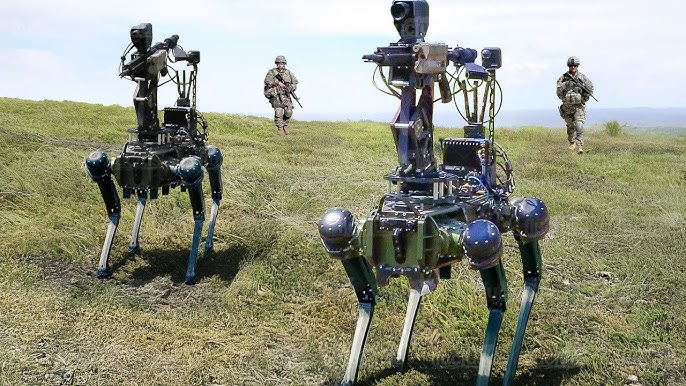Chinese Military Robots SH0CKED The World at IDEX 2025 Exhibition – naruto
The International Defense Exhibition and Conference (IDEX) 2025, held in Abu Dhabi, became the epicenter of technological revelations, with one spectacle standing out—Chinese military robots. As the world grapples with evolving warfare dynamics, the unveiling of these advanced machines sparked intense debate, raising questions about ethics, autonomy, and the future of military engagement.
At the heart of the exhibition, the Chinese military showcased an array of robotic systems designed for various combat scenarios. Among them were unmanned ground vehicles (UGVs) capable of reconnaissance, logistics support, and even direct engagement with enemy forces. These robots boasted advanced artificial intelligence (AI) algorithms, enabling them to make split-second decisions in the heat of battle. The sheer sophistication of these machines left observers both in awe and in fear, as their capabilities seemed to blur the line between man and machine.
Critics quickly pointed out the ethical implications of deploying such technology in warfare. The idea of robots making life-and-death decisions raises profound moral questions. Can we trust machines to uphold the principles of warfare? Will autonomous weapons lead to an escalation of conflicts, as nations may feel emboldened to engage in warfare without the full human cost? These questions were echoed by international watchdogs, urging a global dialogue on the regulation of military robotics.
Supporters of the technology argued that these robots could minimize human casualties by taking soldiers out of harm’s way. They contended that, in an era of asymmetric warfare, where non-state actors often employ guerrilla tactics, having advanced robotic systems would provide military forces with a significant advantage. By deploying robots for dangerous missions, nations could protect their personnel while still maintaining operational effectiveness. This argument, however, does little to assuage fears about the potential for misuse and unintended consequences.
Furthermore, the exhibition showcased not only ground robots but also aerial drones capable of conducting surveillance and precision strikes. The integration of AI in these drones enables them to operate autonomously in complex environments, making them a formidable asset in modern warfare. However, the prospect of drones making kill decisions without human intervention sparked outrage among human rights advocates, who warned of the potential for indiscriminate violence and collateral damage.
The geopolitical implications of China’s advancements in military robotics cannot be overlooked. As tensions rise between major global powers, the introduction of sophisticated military technology could trigger an arms race. Nations may feel pressured to develop their own robotic systems, leading to a cycle of escalation that could destabilize international relations. This scenario underscores the urgent need for international treaties governing the use of autonomous weapons, similar to those addressing chemical and biological warfare.
In conclusion, the unveiling of Chinese military robots at IDEX 2025 has ignited a heated debate about the future of warfare. While proponents highlight the potential for increased efficiency and reduced human casualties, critics warn of the ethical and geopolitical ramifications. As technology continues to evolve, the world must grapple with the profound implications of integrating AI and robotics into military operations. The conversation surrounding these advancements is not just about technology; it is about the values we hold as a society and the kind of future we envision for warfare.










.jpeg)
Comments
Post a Comment